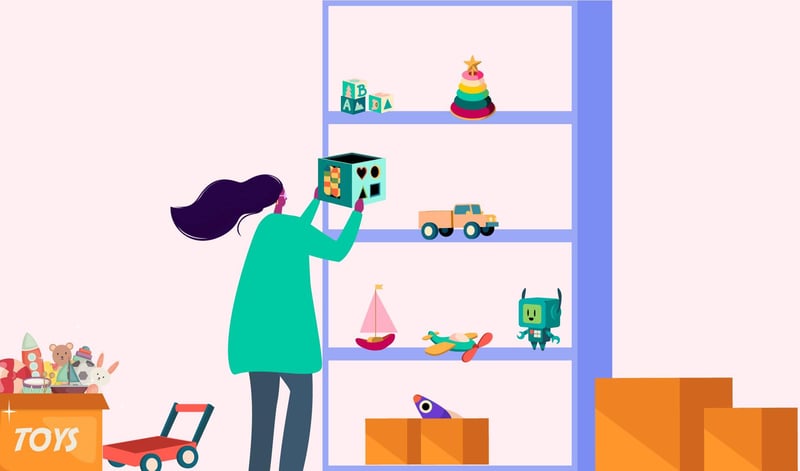You can call them fakes, imitations, or counterfeits, but by any name, these unlicensed collectible toys are becoming a real pain for both sellers and buyers. Fakes are getting more convincing each year, but there are still some telltale signs that can help you sort out the real toys from their fake counterparts. In this quick guide, we’ll talk about the different types of fake toys and give you some tips on how to spot the small differences so you don’t get duped.
Types Of Counterfeit Collectible Toys
Resellers need to be aware of how to spot fake items when they source, not only so they don’t get ripped off but because it’s illegal in the US to sell counterfeit items. You won’t be able to use “I didn’t know it was fake” as a legal defense, so be sure to educate yourself before you accidentally source and then sell a fake item.
Here are some common types of fake or counterfeit items:
Collectible Copies
In the past, it was common for toymakers to literally copy each other's molds and make strikingly similar toys, but this practice ended in the 1970s with stronger laws in the US against this practice. It’s not as illegal in other countries, however, and those copies often make their way into the US. In non-US markets, these nearly-the-same items are called pass-offs and might come with a very similar branding making it hard to tell at a glance that it’s not the real thing.
Fake Toy Collectibles (Repainted, Restickered)
You can often spot fakes because they have been repainted, re-stickered, or have had their packaging altered.
Unlicensed
Unlicensed products are those that don’t have the copyright or trademark holder’s permission to use their image or likeness. You see lots of unlicensed products with Disney characters or other pop culture favorites printed on them.
Tips For Spotting Fake Collectible Toys Before You Purchase
If you’re looking to buy online, the website will tell you a lot about the item’s authenticity. Look for poor grammar and misspelled words. Websites that have blurry or low-quality images are another red flag. If the website allows 3rd party sales (such as Amazon, eBay, and Walmart), make sure to check out the seller information page as well.
Price is another telling factor. A very low price might not be just a good deal; it could be an indication that the item isn’t authentic or that it’s damaged. Shopping from a trusted website or from the brand’s own stores is best when possible.
Always double-check the packaging. Flaws in the packaging are usually signs of fake merchandise. The brand name should be spelled and presented correctly. You can check 3rd party packaging against photos of the original packaging from the brand’s website.

Recognizing a Fake Funko Pop
Funko Pops are incredibly hot right now, and because they are limited edition by design, some can get very pricey. You’ll often be buying hot or rare Funko Pops from secondhand sellers, so it’s a good idea to be familiar with the common signs of fake pops.
Detecting counterfeit Funko Pop figures can be effortlessly accomplished by examining the packaging they are enclosed in. An excellent indicator of authenticity lies in the box's printing, which should boast impeccable clarity and vibrant imagery, signifying top-tier quality. Vigilantly scrutinize for any telltale signs of forgery, such as glaring misspellings or distorted images, as these commonly serve as red flags hinting at a counterfeit item.
Fake pops will also often have a low-quality paint job. Detecting a bad paint job will come down to small details to look the item over closely. Funko Pops are known for having small details related to the iconic character they are representing. You can look for missing or incorrect details between a real and fake Funko Pop.
For more information on buying and selling Funko Pops, check out our blog Funko Pop Collectibles: How To Buy and Sell Funko Pops Online.
In a world where fake and counterfeit toys are increasingly prevalent, it is crucial for toy collectibles resellers to stay vigilant and informed. By recognizing the different types of fakes and understanding the telltale signs, resellers can protect themselves from legal issues and ensure that their customers receive authentic products.
Whether it's identifying collectible copies, spotting repainted or re-stickered items, or steering clear of unlicensed products, resellers must educate themselves to avoid unintentionally selling or buying counterfeit toys.
Additionally, when purchasing online, paying attention to the website's quality, seller information, and pricing can provide valuable clues about the authenticity of the items. Always scrutinize the packaging for flaws and inconsistencies, and when dealing with popular items like Funko Pops, be aware of specific indicators like printing quality and paint job accuracy. By following these tips and staying knowledgeable, toy collectibles resellers can navigate the market with confidence and ensure the satisfaction of both themselves and their customers.
Want more tips and tricks? Check out How to Source Inventory for Free or With a Low Budget
Ready to start crosslisting? Sign up for Vendoo for FREE today!






